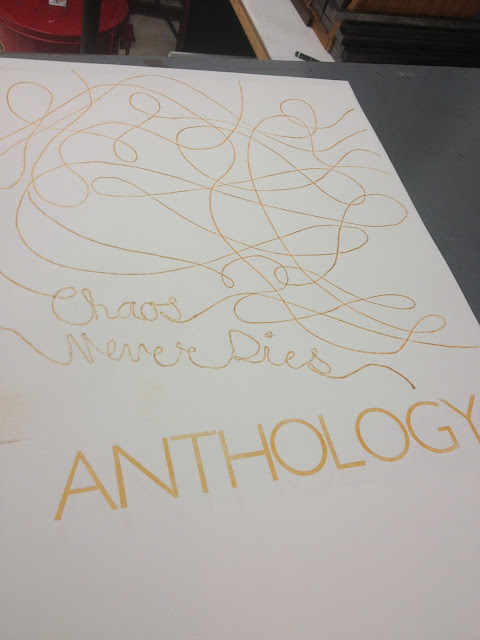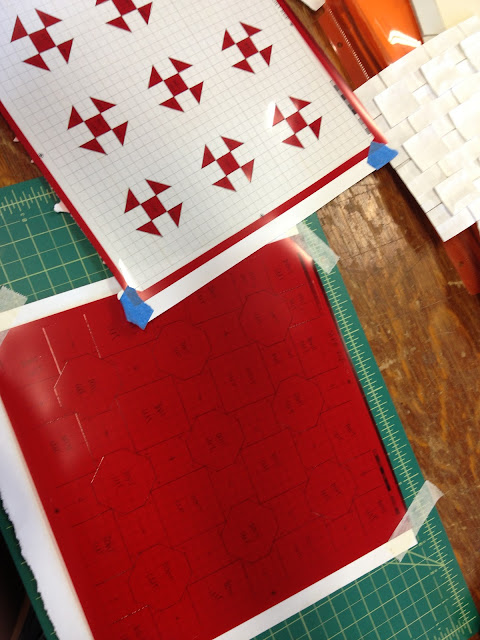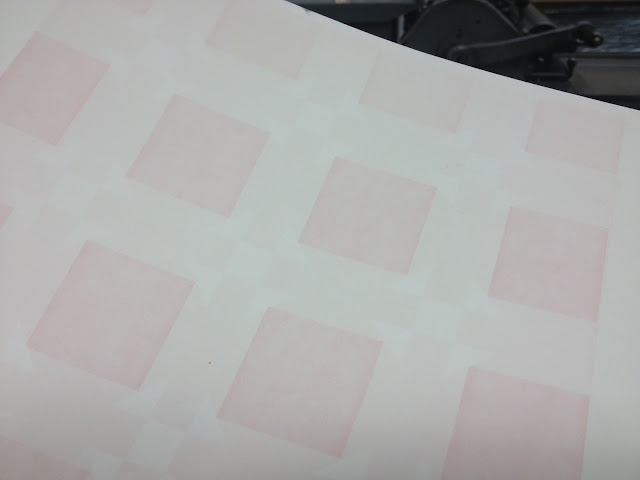The theme for this month's Anthology poster was Chaos Never Dies! I was nervous about creating something that would be up all over for everyone to see. I felt better about it after I was told that it has a pretty short shelf life - a week at most. Phew!
I decided to make a collagraph for the image and would figure out the rest as and when I got the rest of the information for the poster. This ended up happening only a few days before it was due, and I threw together the type at the last minute. Oh well!
I decided to make a collagraph for the image and would figure out the rest as and when I got the rest of the information for the poster. This ended up happening only a few days before it was due, and I threw together the type at the last minute. Oh well!
Mock up for the poster.
Glued string to a block of wood to make the collagraph.
It printed better than expected. And because I didn't coat the whole block with glue, the texture of the string printed as well!
Type.
And done! Well, they still need to be trimmed.

























.sm.jpg)





































